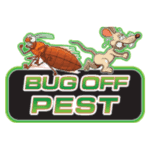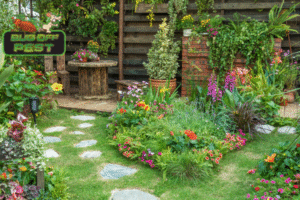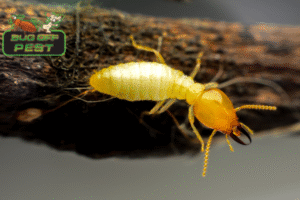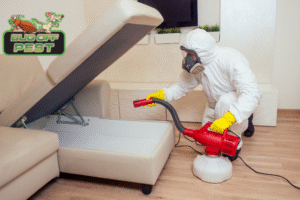Keeping your home free of pests can feel like a big job. This is true when you have household pests like ants, cockroaches, and rodents that do not go away easily. But the good news is that DIY pest control can help. These simple steps do not cost a lot of money. With diy pest control, you look at what makes pest infestations worse and take care of those things. You can do this by cleaning often, sealing up spots where pests get in, and stopping moisture from building up. These steps are big parts of good pest management. By doing all this, you help keep pests out. It will make your home safer for you and the people you care about. This way, you make the space healthy and free of pest problems.
8 DIY Pest Control Tips to Keep Your Home Pest-Free
Every homeowner knows that pests can be a problem at home. When you understand what pests do, you can find ways to get rid of them. You do not always have to call a professional for pest control. Many diy pest control methods can help you stop an infestation and take back your house. You can start by looking for places where they get in. Storing your food the right way is also important in pest control. All these tips focus on helping homeowners manage pests in their own homes.
When you use these approaches, you build a shield against ants, mosquitoes, and other pests. These diy pest control methods help you deal with infestations quickly. You also learn not to use too many chemicals, and instead use more natural ways. With these tips, homeowners know what to do if pests show up.
Inspect and Seal Entry Points Around Doors and Windows
Did you know that pests get inside your home through little gaps you may not notice? Small cracks and crevices around door frames, windows, and vents act as ways for ants, cockroaches, and even rodents to come in. Walk around the outside of your house and look closely at all entry points. Even really small cracks or gaps can be enough for them to get in.
When you find where these little zones are, use caulk to seal them tight. Pay extra attention to areas by wire connections, where pipes go into your house, and around air vents. You might miss these spots, but they are important. For tough spots in crevices where rodents like to push through, steel wool works well to block them.
If you check your house every few months, you can stay ahead of pests. When door frames and vents are well-kept, they help keep pests out and save you time from having to deal with the same problem over and over.
Eliminate Standing Water to Deter Mosquitoes and Insects
A hidden cause of infestations can be standing water. Mosquitoes and bugs like places with still moisture. They live and breed there. You need to check crawl spaces, basements, and the areas by sprinkler systems. Places near outdoor water spigots are also important, since they often have leaks.
Fix any leaky pipes and repair drainage systems as soon as you see a problem. Moisture that stays for a long time will help pests move in and make your space the new home. Try using a dehumidifier if you want to cut down on damp places in rooms like the attic, basement, and crawl space, where pests get in most often.
Be sure to look at flowerpots, birdbaths, and outside gutters too. These places collect water when it rains and turn into a great place for mosquitoes to lay eggs. Keeping things dry around your home stops pests from gathering, because the bugs cannot live there without moisture and leaks.
Keep Food Stored in Airtight Containers
Improper food storage brings in pests like ants, beetles, and cockroaches right away. These pests go straight to unsealed food items. It does not matter if the food is for people or for pets. To stop this, it is good to use airtight containers for things like grains, snacks, and leftovers.
For pet food, choose BPA-free plastic containers or tough stainless steel ones. These will help keep pet food fresh and make sure no pest gets in. Try to keep pet food in a place that is not close to where you keep other food. This helps cut down on the things that attract pests.
Always get rid of any spoiled or expired food as soon as you can. This helps cut out pest risks. Do not leave bags of food open on the counter or shelves. If you seal all food tightly, pests like ants, beetles, and cockroaches will not get their main supply of what they need. That is a good way to have a pest-free home.
Maintain a Clean Kitchen and Dispose of Garbage Regularly
Keeping your kitchen clean is very important to stop pests from getting in. Good pest control starts when you wipe the counters every day. Place all food in sealed containers. If you leave crumbs out, ants and roaches will come in to eat them.
Wash the dishes right after you use them.
Clean out the sink drains, remove any food or gunk.
Use a trash can that locks, and take out the garbage often.
Use a vacuum and mop the floors often to pick up anything left behind.
Also, always look at spots under the sink and around appliances. Pests like to hide out there. Wipe off grease from the top of the stove. Be sure to clean the cabinet shelves every week. This will stop dirt from building up. A tidy kitchen keeps away pests like ants and roaches. It also helps with hygiene for you and your family.
Trim Bushes and Trees Away from the House
Overgrown bushes and tree branches that hang down make it easy for termites, spiders, and other pests to get to your house. Start by checking the plants near your home. If you see any that touch the walls or roof, you should cut them back.
Ants and more insects often live inside or under tree trunks and large shrubs. These areas near your house help pests come in. Clearing these problem spots takes away places where bugs live and also helps keep away moisture, which makes even more pest issues. This step is good for pest management around your home.
In the long run, you should keep some space between the siding of your house and the nearby bushes or trees. Try to keep at least a few feet of open area there. Make sure you always clear away leaves from your gutters and roof. If you let leaves pile up, you give ants, spiders, termites, and other bugs extra places to hide. Doing this kind of work ahead of time is an easy way for us to keep pests out for good.
Use Natural Repellents and DIY Pest Solutions
Using natural repellents can help you depend less on products with chemicals. These diy pest control methods are safe for homeowners and they work well against many common pests. Here is a table that can help you pick the best DIY solution:
With these solutions, you get rid of pests and have less of the stuff that is harmful in your home. Put the repellents where you need them most, like in crevices, kitchens, or other places where ants, roaches, or other bugs like to get in. This way, you can take good care of your pest problem without worry.
Declutter Storage Areas and Remove Potential Nesting Sites
Pests can be found in messy places like attics or basements. To keep pests away, it helps to organise these storage areas and take out things you do not need. Cardboard boxes are a big draw for rodents and spiders because they keep in heat.
Use plastic storage bins instead of cardboard to stop pests from nesting. Vacuum these areas often. Doing this will pick up things and waste that can bring in insects. Be sure to check drawers and closets you do not open much, as cockroaches and other pests like to hide there.
If you keep clutter out and watch these spots, pests will not have places to live and grow. Taking care of the problem stops spiders, cockroaches, rodents, and other pests from being in your home all year.
Check Pets and Their Bedding for Fleas and Ticks
Your pets might bring fleas and ticks into your house without you knowing it. That’s why it’s important to check them often. Wash pet bedding every few weeks. This will help keep pest problems lower. You should also wash laundry, like blankets or clothes, that your pet uses a lot.
Look at your pet’s fur and skin to spot fleas. Signs can be things like too much scratching or red spots. Use shampoos or other treatments from the vet to get rid of these pests if they are there. When you clean, make sure you take care of your pet’s play areas and the furniture they sit on.
Doing these things helps you keep fleas, ticks, and pest infestations under control. Regular checks will protect your pet and your family from infections and other problems.




